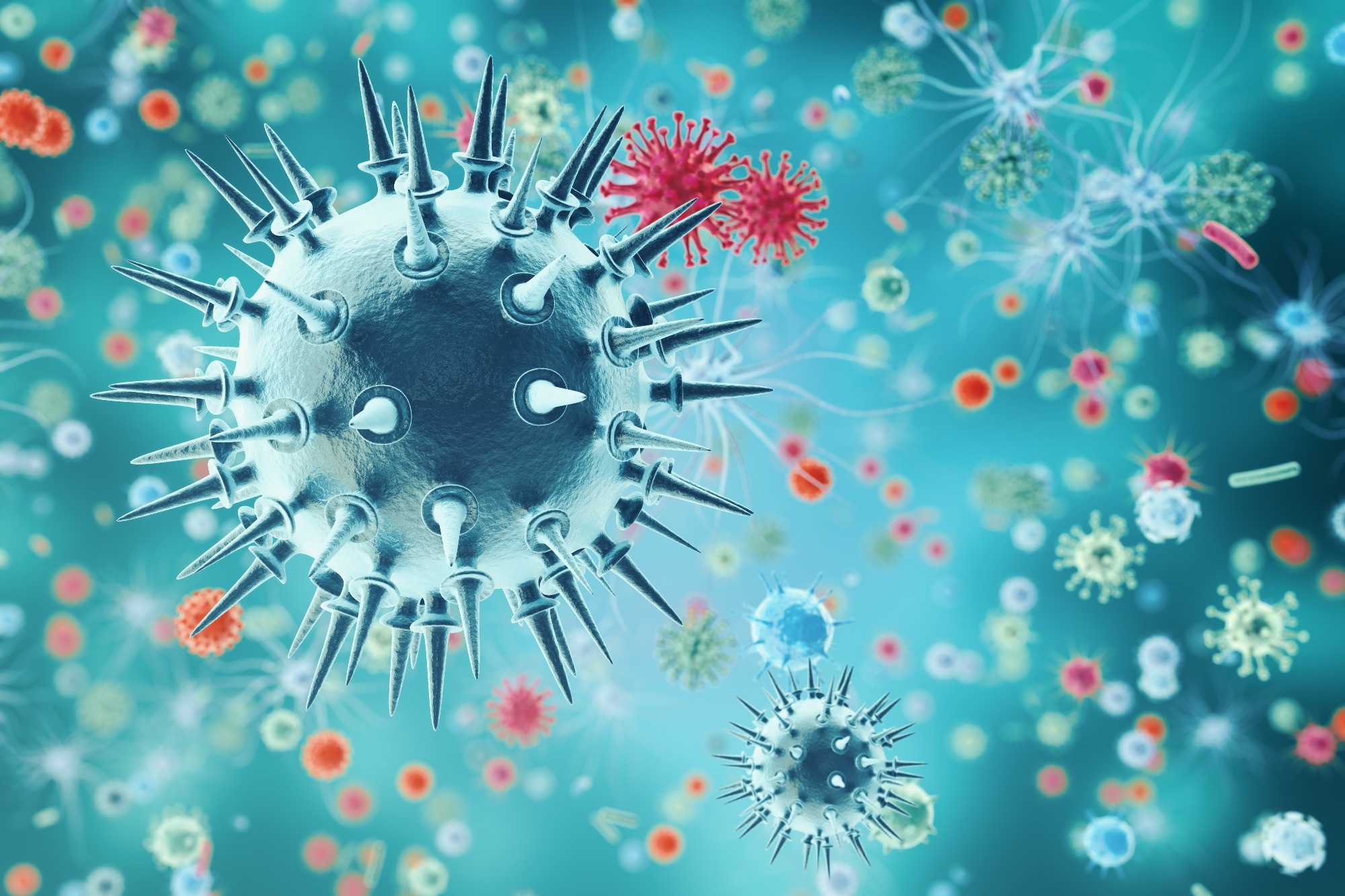The researchers also highlighted the importance of molecular dynamic (MD) simulations and molecular docking (MDO) analysis for combating EIDs.
 Study: Molecular docking used as an advanced tool to determine novel compounds on emerging infectious diseases: A systematic review. Image Credit: Rost9/Shutterstock
Study: Molecular docking used as an advanced tool to determine novel compounds on emerging infectious diseases: A systematic review. Image Credit: Rost9/Shutterstock
EIDs refer to transmissible and rapidly expandable illnesses exhibiting high drug resistance. EIDs have caused significant morbidity and mortality and have been perceived as predominant consequences of host-pathogen adaptions. MDO and MD simulations have recently been used as advanced tools to analyze host-pathogen relationships.
About the review
In the present systematic review, researchers provided an overview of factors influencing EIDs, emphasizing MDO applications and MD simulations for novel drug discovery against EIDs.
Factors influencing emerging infectious diseases
EID virus spreading potential is the result of novel etiological discoveries or genomic mutability of existing pathogenic organisms transmitted by zoonotic pathways. Viral variant emergence with greater immune-evasiveness and transmissibility has potentiated pandemic spread. Factors contributing to the EIDs include viral evolution, population relocation, global air travel, trading activities involving new locales, human conduct (sexual intercourse, drug abuse, and lifestyle habits), immunosuppressed status, and socioeconomic disparity.
Other factors include climate, environmental sanitation, horticultural alterations, deforestation, destitution, and antimicrobial resistance. Structural analysis of viruses is performed to identify potential drug targets. HIV is a ribonucleic acid (RNA) virus, with the gag, pol, and env genes essential for creating constructional proteins, whereas the remaining six genes control HIV transmission.
HIV covering/coat comprises spikes with glycoproteins (gp) 41 and 120, beneath which proteins such as p17 (matrix protein) and p24 (capsid or center protein) are located. Inside the viral core lie proteins such as reverse transcriptase, integrase, and protease that are essential for HIV replication. The gp120 protein binds to α4β7 integrin for HIV-1 replication. HIV-1 proliferates and spreads in the human body with a concomitant reduction in the cluster of differentiation 4 (CD4) lymphocytes.
Influenza is a seasonal epidemic that occurs due to influenza paramyxovirus. The influenza A virus (IAV) comprises ssRNA and surface proteins such as hemagglutinin (HA) and neuraminidase (NA). NA breaks α-ketosidic linkages, and IAV invades host cells via endocytosis, after which the virus binds to the endosomal layer, and endosomes transform into the lysosome. HA unfurls and IAV nucleocapsid is discharged into and unifies with the host cell cytoplasm.
Severe acute respiratory syndrome coronavirus 2 (SARS-CoV-2) virions have a ribonucleoprotein (RNP) center, comprising genomic RNA, complexed with the nucleocapsid (N) protein, and a lipid envelope comprising the envelope (E), membrane (M), and spike (S) proteins. M interacts with RNA, which transports genomic wrapping signals. SARS-CoV-2 N comprises an N-terminal domain (NTD) and C-terminal domain (CTD), that can restrict RNA in vitro.
MDO analysis, MD simulations, in vitro and in vivo studies
Advanced computational techniques such as MDO and MD involving virtual screening (VS) enable in-depth experimental drug discovery research, searching larger databases comprising chemicals to detect new ligands, and potential anti-inflammatory inhibitors. MDO is a structural analysis performed to detect protein binding sites and assess binding affinities between small particles and macromolecules, which can potentially be used as drug targets.
MDO studies have been performed to detect HIV-1 protease inhibitor drugs such as amprenavir (APV), ritonavir (RTV), tipranavir (TPV), saquinavir (SQV), indinavir (IDV), lopinavir (LPV), fosamprenavir (FOS-APV), atazanavir (ATV), and nelfinavir (NFV). The findings indicated that Arg212 residue offered allowance in hydrogen bond advancements in the drug combinations and that RTV, APV, IDV, SQV, FOS-APV, and darunavir shared similar restricting modes.
Molecular analysis of IAV showed that HA tied with sialic corrosive detected on the outside of the host cell to commence infection. Ligand molecules such as stilbenoids_19, 23, stemonine, zanamivir, oseltamir, and tuberospironine, were docked into the NA molecular structure. Stilbenoids_19 showed the most reduced restricting energy scores and stilbenoids_19,23, tuberospironine, and stemonine were selected as intense objective competitor drugs for H1N1.
MDO analysis of SARS-CoV-2 S showed that HIV-protease inhibitors such as lopinavir, cobicistat, darunavir, and ritonavir; calming medications, such as baricitinib, thalidomide, ruxolitinib, anti-toxin drug mitigating drugs, such as thalidomide, baricitinib, ruxolitinib; anti-infection medications such as spiramycin, and erythromycin, had a great proclivity towards SARS-CoV-2 S. MD simulations have shown that oseltamivir binding occurs via charged ion channels in H5N1 and H1N1 NA. In addition, LPV, NFV, and RTV have high binding affinities for SARS-CoV-2 main protease.
Post-MD and MDO analysis, in vitro and in vivo studies are conducted. In vitro studies include cell-based assays and microorganisms to obtain preliminary data on the preclinical drug efficacy and safety. In vivo studies are performed using animal models to assess drug pharmacodynamics and pharmacokinetics. E.g., the LPV-SQV combination significantly inhibited HIV-1 replication in vitro, following which, in vivo assays were performed to establish the optimum dosage.
Overall, the review findings highlighted the use of computational tools such as MD simulations and MDO analysis as effective techniques for novel drug discovery.
Journal reference:
- Gouthami, K., Veeraraghavan, V., Rahdar, A., Bilal, M., Shah, A., Rai, V., Gurumurthy, D.M., Ferreira, L.F.R., Américo-Pinheiro, Juliana.Heloisa.Pinê., Murari, S.K., Kalia, S., Mulla, S.I., (2022). Molecular docking used as an advanced tool to determine novel compounds on emerging infectious diseases: A systematic review. Progress in Biophysics and Molecular Biology. doi: https://doi.org/10.1016/j.pbiomolbio.2022.10.001. https://www.sciencedirect.com/science/article/pii/S0079610722001018#!